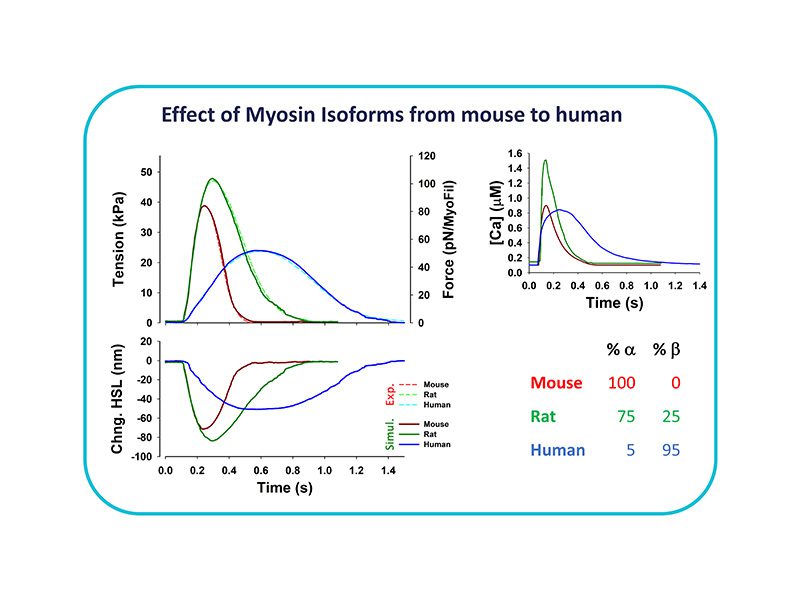


Effect of Myosin Isoforms from Mouse to Human
To understand how pathology-induced changes in contractile protein isoforms modulate cardiac muscle function, it is necessary to quantify the temporal-mechanical properties of contractions that occur under various conditions. Pathological responses are much easier to study in animal model systems than in humans, but extrapolation between species presents numerous challenges. Employing computational approaches can help elucidate relationships that are difficult to test experimentally by translating the observations from rats and mice, as model organisms, to the human heart. In this study, we used the spatially explicit MUSICO platform to model twitch contractions from rodent and human trabeculae collected in a single laboratory. This approach allowed us to identify the variations in kinetic characteristics of α- and β-myosin isoforms across species and to quantify their effect on cardiac muscle contractile responses. The simulations showed how the twitch transient varied with the ratio of the two myosin isoforms. Particularly, the rate of tension rise was proportional to the fraction of α-myosin present, while the β-isoform dominated the rate of relaxation unless α-myosin was >50%. Moreover, both the myosin isoform and the calcium transient contributed to the twitch tension transient, allowing two levels of regulation of twitch contraction.
You can read about this in more detail in our paper: Prodanovic et al. (2022), International Journal of Molecular Sciences, 23(3), 1135.
Sorry, the comment form is closed at this time.